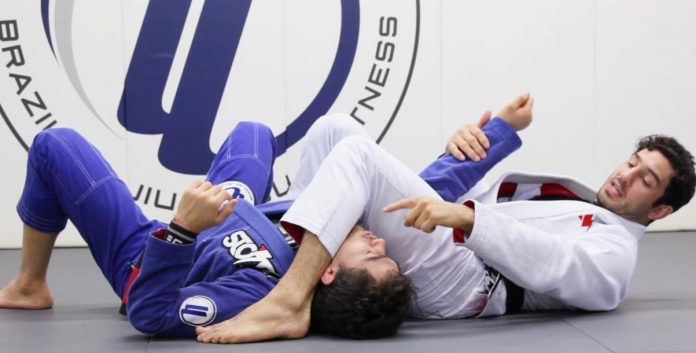
What is your favorite side control submission? There are plenty to choose from, that’s beyond a doubt. However, statistically speaking, most people tend to go for chokes. Chokes are easier to set up without giving away too much space for the bottom person to move and escape. But why limit yourself to chokes? An armbar from side control can be a powerful weapon, particularly as there are two limbs to attack with it, compared to just the one neck. Let’s explore some options.
An armbar from side control is not an unusual attack. It is just an attack that people tend to skip, because of the high risk that you’ll lose both the submission and the position. In some cases, you might even end up being on the bottom. Those are all valid points, but the armbar from side control does have several setups that help you get rid of all the risk, and increase the submission percentage rate. All it takes is a bit of patience, which somehow, seems to be the one quality most BJJ athletes lack.
Fixing The Armbar From Side Control
Go near or go far? Go straight or go bent? These are just a couple of the questions people ponder when they contemplate whether or not they should go for that armbar from side control. Let’s tackle some of the main issues of hunting armbars from side control before we take a look at several setups.
First and foremost, you can’t go for armbars if you don’t have a side control variation that you know and understand. Holding people in side control is a dynamic effort, not a static pin. To that extent, you need to be comfortable shifting your weight in ways that pin opponents to the ground while you’re setting up your attacks. In this case, given that you need to get your hips behind the shoulder of an arm, you need to understand how to pin just the key parts of a person’s body that you need to be static while you’re maneuvering for an armbar from side control.
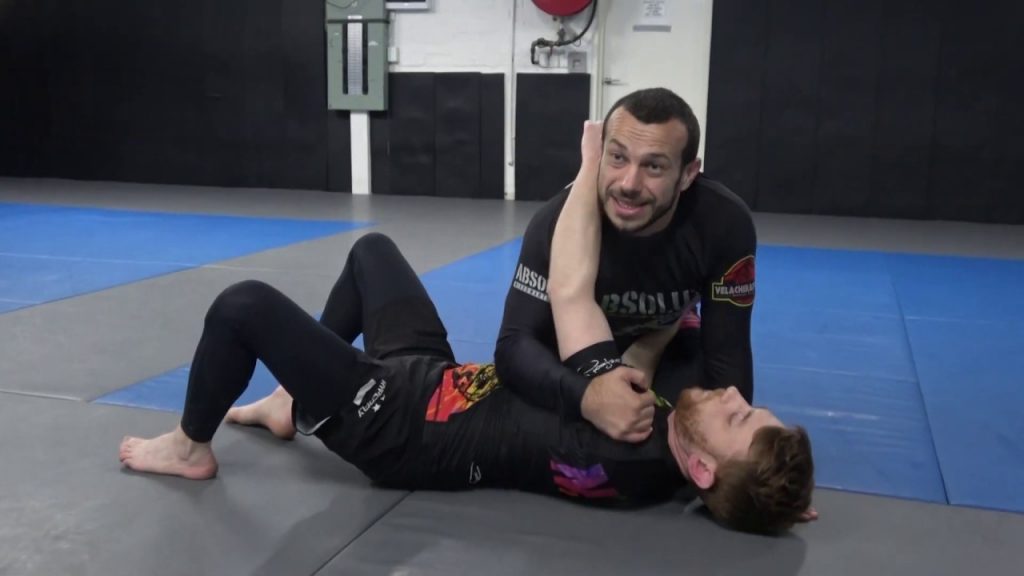
The rule of thumb for success is with a side control armbar setup is this – you need to have the shoulder you’re attacking off the ground. At the same time, having it pinned to your body will make all the difference in the world when it comes to retaining position and having success with the armlock.
1. Stepover Far Side Armbar
As I mentioned, the far side armbar from side control is a more common attack, due to the fact you can isolate it early on, and use the grips to maneuver your hips into position. Remember, with an armbar, it is all about how close your hips are to the opponent’s shoulder. All the other details fade in comparison to this.
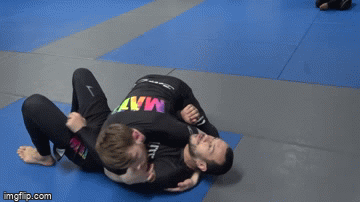
Form a windshield wiper pin, lift the shoulder even further up and place the foot of your leg behind the opponent’s head. This is the leg that will eventually end up under the armpit. Only when you’re in place here (this is the step over) can you spin into position and still focus only on getting your hips as close as humanly possible to the opponent’s shoulder. Ending up in that position ensures you’ll get a tap with the armbar once you extend the arm.
2. Far Side Pop Up Armbar
This is a different take on the far side armbar from side control, one that involves more traditional maneuvering and a different grip configuration. By traditional maneuvering, I mean that you actually go through different side control variations while setting up this particular armbar.
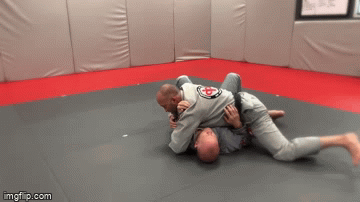
The final entry into an armbar from side control is with a pop, where you both lift the shoulder-high off the ground and position your hips in the perfect post in one go. The Kimura grip gives you all the security you need to perform a jump or pop up without the risk of losing anything. The finish will come naturally from there.
3. A Slick Near Side Armbar
This is definitely a very sick way to set up an armbar from side control. It may be better suited for more experienced grapplers, but that doesn’t mean anyone can’t set it up. You just need to follow the pinning instructions correctly to get the submission.
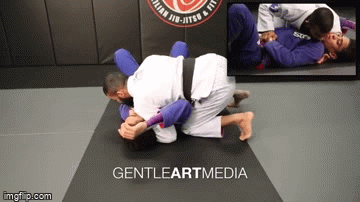
Once again, the goal from there is to lean forward in order to get the hips as close and low as possible to the shoulder, while swinging your other leg over the head to get into a finishing position.
Wrap Up
Doing an armbar from side control doesn’t have to be risky. You can be meticulous about it, like in the stepover armbar. You can also be old school and move through different side control pins and grips, like in the pop-up version. Or you could go for the cool armbar from side control finish and look to attack the near side arm from a reverse Kesa Gatame. As long as you remember that it is all about the hips, you’ll do just fine.


![Darce Choke Encyclopedia – Origins, Mechanics and Variations [2025] BJJ, choke, Brabo, BJJ Darce Choke, D'arce Choke, Darce BJJ Choke](https://bjj-world.com/wp-content/uploads/2017/11/JungPoirierLeeYahoo-218x150.jpg)









![Frame Lasso Robson Moura DVD Review [2025] Frame Lasso Robson Moura DVD Review](https://bjj-world.com/wp-content/uploads/2025/04/frame-lasso-robson-moura-dvd-review-218x150.png)

![Leg Locks Finishes Helena Crevar DVD Review [2025] Leg Locks Finishes Helena Crevar DVD Review](https://bjj-world.com/wp-content/uploads/2025/04/leg-locks-finishes-helena-crevar-dvd-review-218x150.png)


![Leg Entanglement System: X Lock Owen Jones DVD Review [2025] Leg Entanglement System: X Lock Owen Jones DVD Review](https://bjj-world.com/wp-content/uploads/2025/04/leg-entanglement-system-x-lock-owen-jones-dvd-review-218x150.png)


![EMU Guard 2.0 Benjamin Power DVD Review [2024] EMU Guard 2.0 Benjamin Power DVD Review](https://bjj-world.com/wp-content/uploads/2024/11/emu-guard-2-0-benjamin-power-dvd-review-100x70.png)
![Weight Training For Grappling Michael Israetel DVD Review [2025] Weight Training For Grappling Michael Israetel DVD Review](https://bjj-world.com/wp-content/uploads/2025/01/weight-training-for-grappling-michael-israetel-dvd-review-100x70.png)

![Dubious De La Riva Dominique Bell DVD Review [2024] Dubious De La Riva Dominique Bell DVD Review](https://bjj-world.com/wp-content/uploads/2024/10/dubious-de-la-riva-dominique-bell-dvd-review-100x70.png)


![Assassin Choke Baret Yoshida DVD Review [2024] Assassin Choke Baret Yoshida DVD Review](https://bjj-world.com/wp-content/uploads/2024/10/assassin-choke-baret-yoshida-dvd-review-100x70.png)
![Reverse Arm Bar System Andrew Kerfoot DVD Review [2024] Reverse Arm Bar System Andrew Kerfoot DVD Review](https://bjj-world.com/wp-content/uploads/2024/10/reverse-arm-bar-system-andrew-kerfoot-dvd-review-100x70.png)
![Osoto Gari for Jiu Jitsu Jackson Nagai DVD Review [2024] Osoto Gari for Jiu Jitsu Jackson Nagai DVD Review](https://bjj-world.com/wp-content/uploads/2024/10/osoto-gari-for-jiu-jitsu-jackson-nagai-dvd-review-100x70.png)




![Leg Entanglement System: X Lock Owen Jones DVD Review [2025] Leg Entanglement System: X Lock Owen Jones DVD Review](https://bjj-world.com/wp-content/uploads/2025/04/leg-entanglement-system-x-lock-owen-jones-dvd-review-100x70.png)



![Spider and Lasso Guard Jared Welman DVD Review [2025] Spider and Lasso Guard Jared Welman DVD Review](https://bjj-world.com/wp-content/uploads/2025/01/spider-and-lasso-guard-jared-welman-dvd-review-100x70.png)
![Modernized Headquarters Passing Shawn Melanson DVD Review [2025] Modernized Headquarters Passing Shawn Melanson DVD Review](https://bjj-world.com/wp-content/uploads/2025/04/headquarters-passing-shawn-melanson-dvd-review-100x70.png)
![I Got Your Back Jake Straus DVD Review [2025] I Got Your Back Jake Straus DVD Review](https://bjj-world.com/wp-content/uploads/2025/03/i-got-your-back-jake-straus-dvd-review-100x70.png)

![How To Knee Cut Junny Ocasio BJJ DVD Review [2025] How To Knee Cut Junny Ocasio BJJ DVD Review](https://bjj-world.com/wp-content/uploads/2025/02/how-to-knee-cut-junny-ocasio-bjj-dvd-review-100x70.png)
![Slicin’ Calves Mikey Musumeci DVD Review [2025] Slicin' Calves Mikey Musumeci DVD Review](https://bjj-world.com/wp-content/uploads/2025/04/slicin-calves-mikey-musumeci-dvd-review-100x70.png)


![Dima Murovanni Kill The Collar Tie BJJ Trendsetters DVD Review [2024] Dima Murovanni Kill The Collar Tie BJJ Trendsetters DVD Review](https://bjj-world.com/wp-content/uploads/2024/09/dima-murovanni-kill-the-collar-tie-dvd-review-100x70.png)

